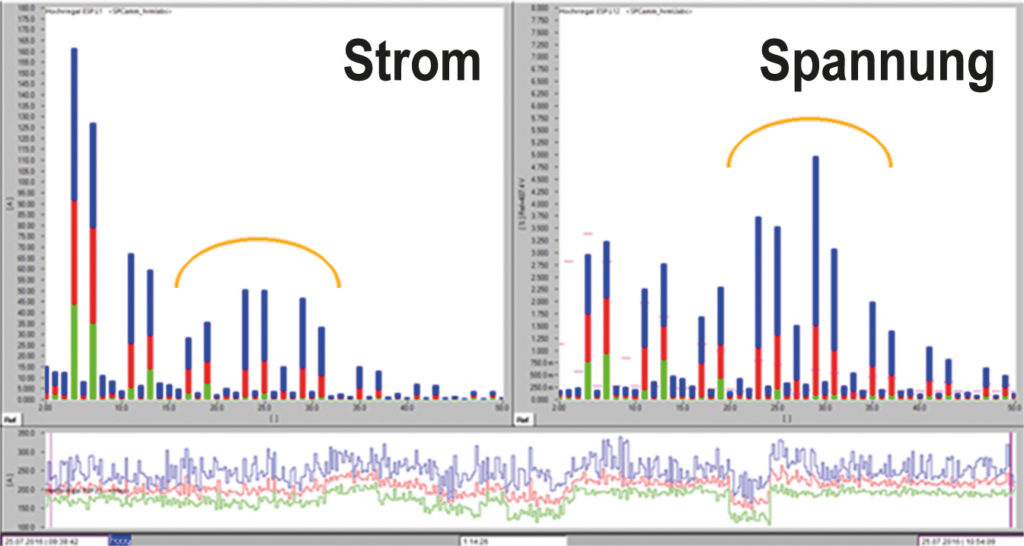Resonances

When the technical jargon speaks of a resonance, it is – from a physical point of view and simplified – a structure capable of oscillation, which is “pushed” by an external force and thus caused to oscillate. The frequency of the oscillation corresponds to the natural frequency (and thus the resonance frequency) of the system. What this means for your energy network, when an electrical switching action (e.g. switching on a manufacturing plant) causes its oscillating structure to shake, could be documented extraordinarily well in a figurative sense – in 1940 – in an age without smartphones and digital cameras – using the then newly built Tacoma Bridge (Washington).
Resonances
In addition to the “classical” low-frequency harmonic problems, our power supply networks often have pronounced current and voltage poles which suddenly – triggered by a parallel voltage phenomenon from a switching action (e.g. a switch-on transient) – oscillate the entire network into a serious imbalance. Such disturbance phenomena – predominantly to be found in the high-frequency, intermediate (inter)harmonic range (> 1,000 Hz) – are described in professional circles as ‘resonances’ or rather as ‘resonance bells’ (lying like a bell over a certain frequency range). Put in plastic terms: The network gets out of balance. This imbalance is often acoustically perceptible by a “buzzing” or “humming” of the resonance-involved and thus more heavily loaded equipment (e.g. transformers, chokes, power supplies). Due to their – often – high-frequency characteristics, we classify these types of voltage phenomena as ‘supra-harmonics’. But exceptions usually prove the rule, because e.g. in generator-driven low load networks with a very low total impedance, resonance bells can also be found in frequency ranges from 50 to 999 Hz. Typical indicators to detect a critically dormant resonant bell in a power system at an early stage are often high current and voltage levels of the inter-harmonics. Resonance detection is only possible through a professional voltage analysis followed by the expertise of our PQ specailists. Many factors such as the mains short-circuit power and the total connected capacity in the respective network influence this distortion. Experience is simply required here … and this shows our specialists on a daily basis that current and voltage interference levels, based on resonance phenomena, are considerably higher than those of low-frequency interference levels. In this respect, special caution is required, since even a not too high resonance-induced interference level – in a suddenly excited state – can usually result in serious “complications” (such as system failures or fires).
Resonances usually lie dormant until the big ‘power grid infarct’, triggered by another parallel exciting grid feedback, mostly hidden. Only through the professional voltage analyses of our PQ specialists can such unstable oscillating circuits be determined at an early stage and damped in the best possible way with the help of our following equipment and systems:
